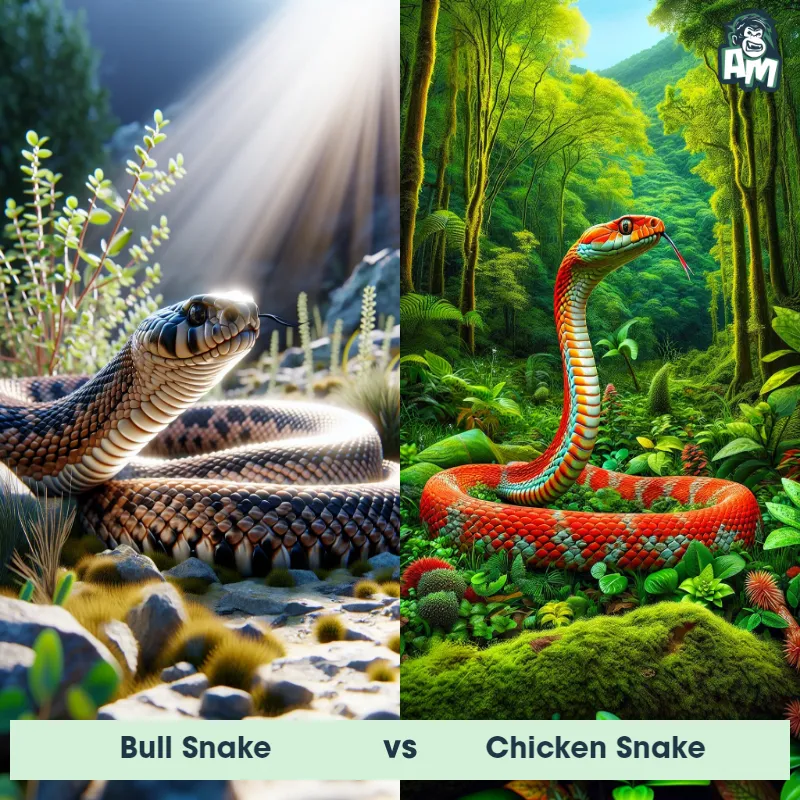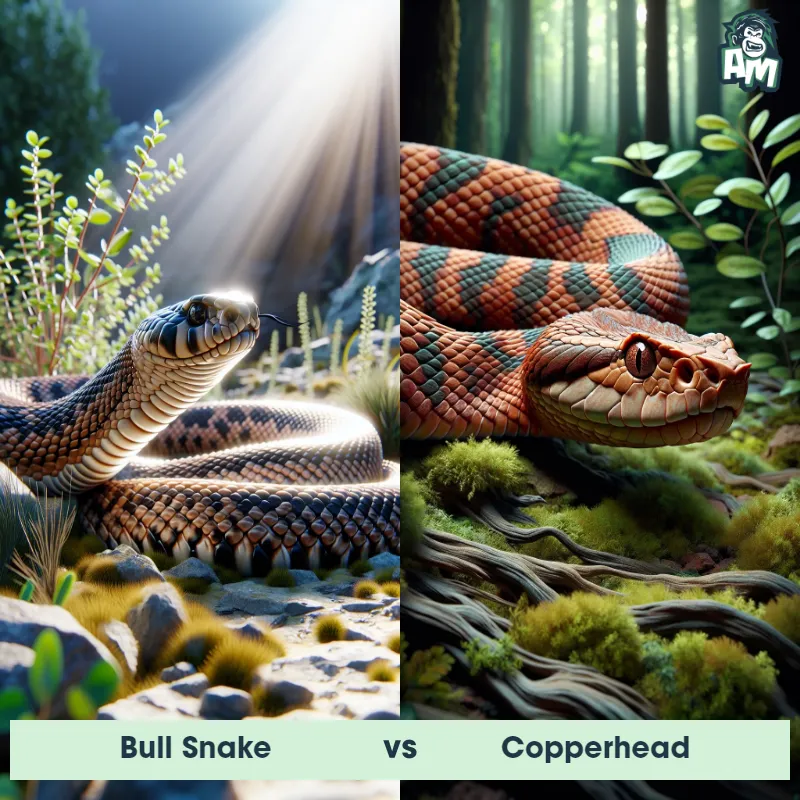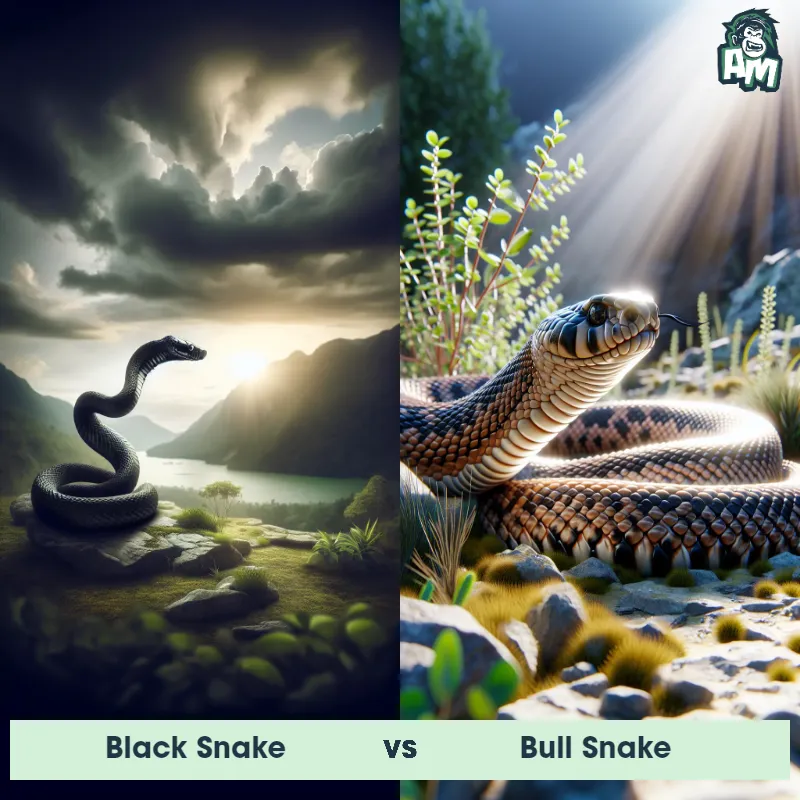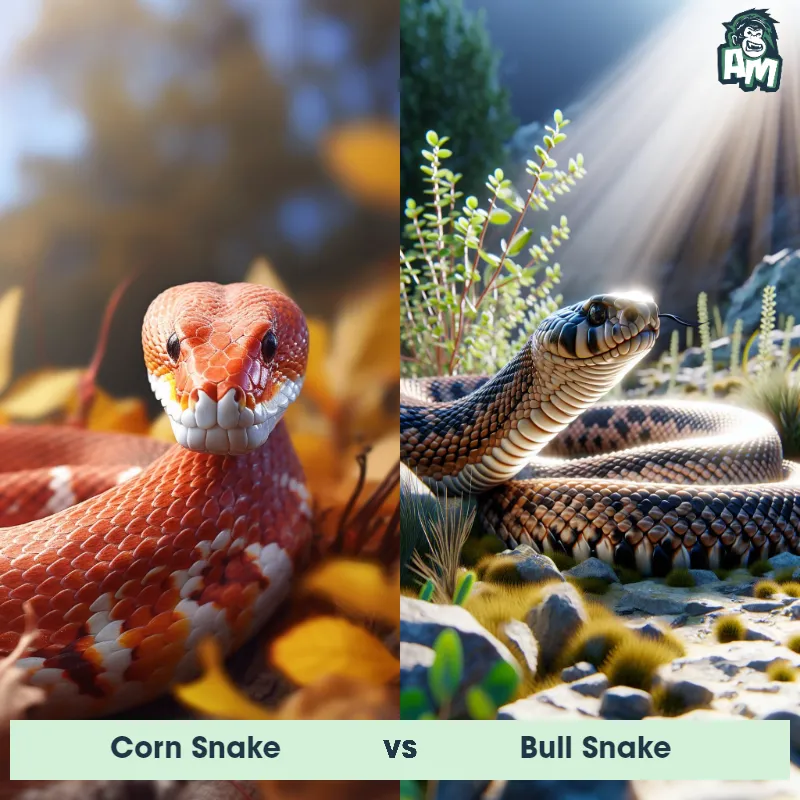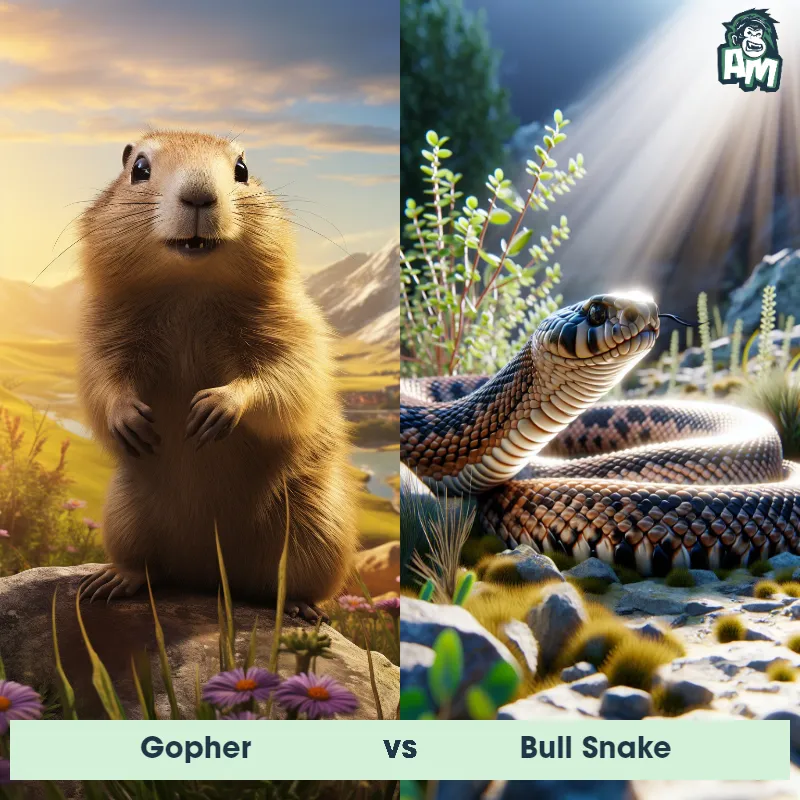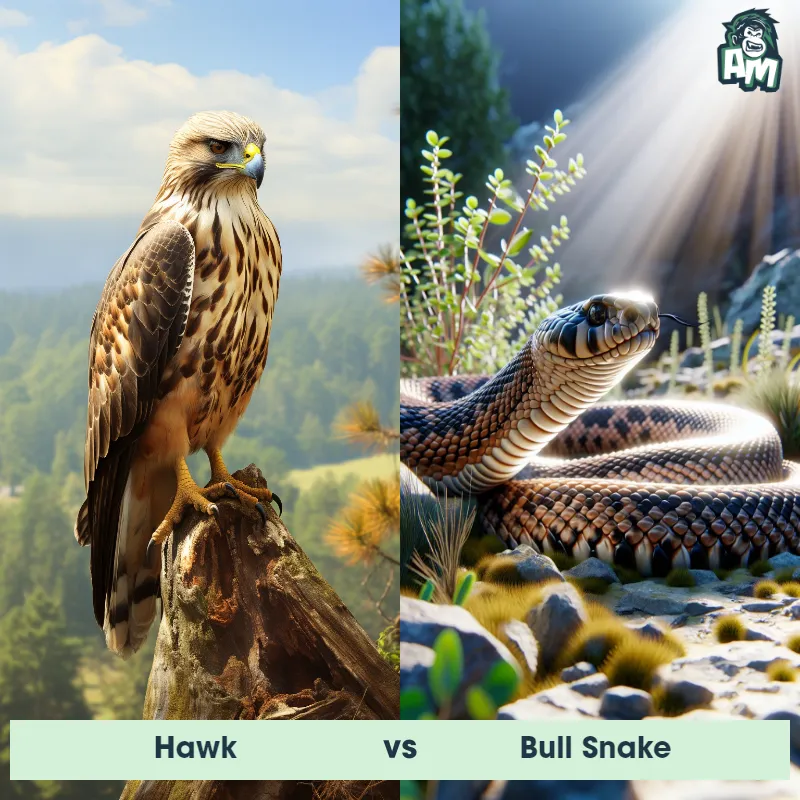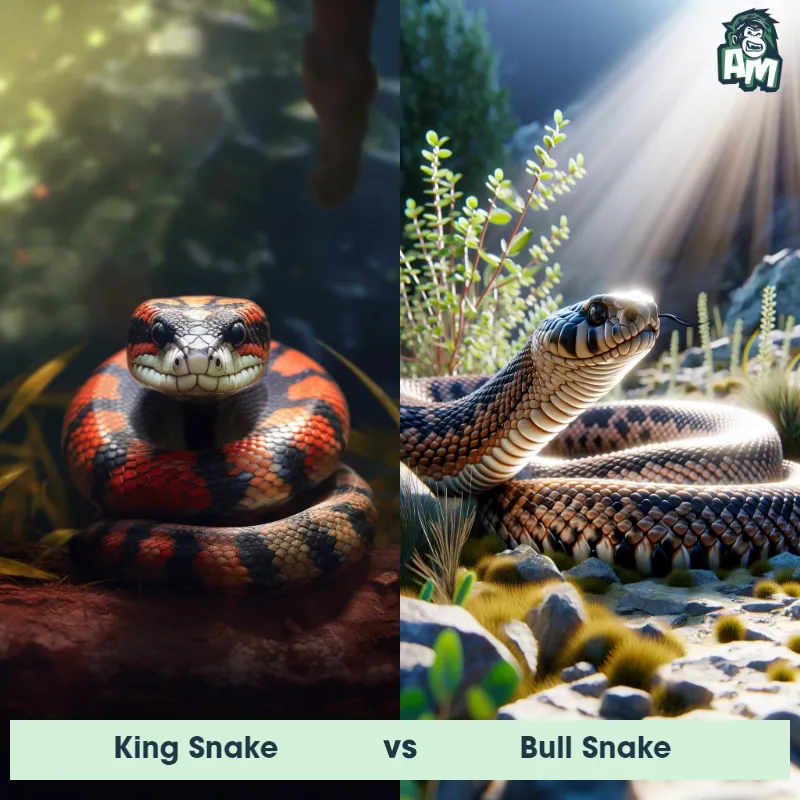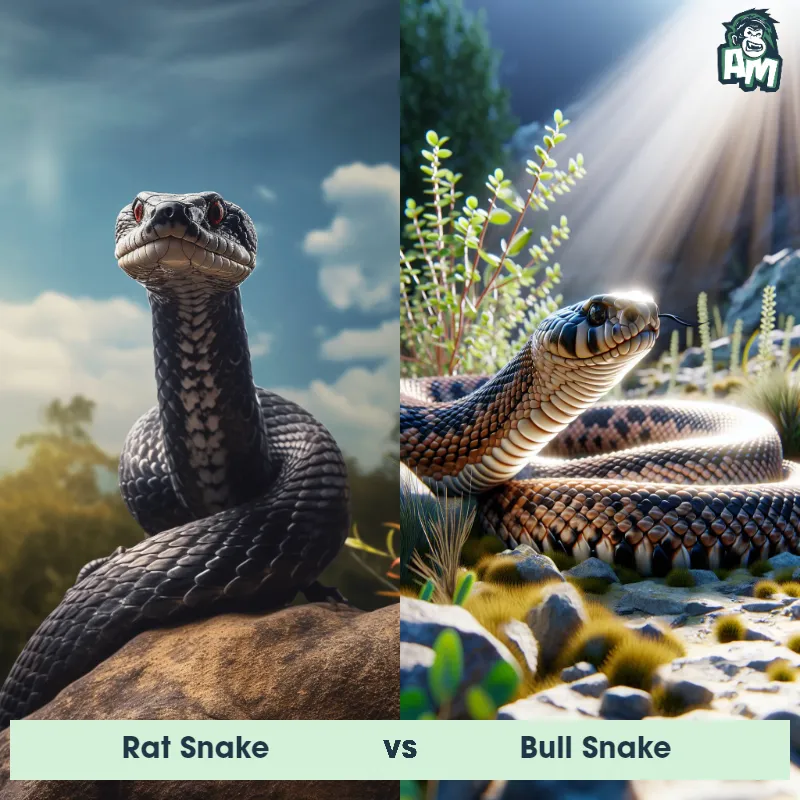The Bull Snake
The Bull Snake, also known as the gopher snake, is a non-venomous reptile found throughout North America. They are medium to large-sized snakes, measuring between 3 to 6 feet in length, with some reaching up to 8 feet. Bull Snakes have a distinctive pattern on their back, consisting of dark brown or black blotches bordered with lighter colored scales. Their belly is pale yellow or cream-colored. These snakes are known for their bluffing behavior, hissing loudly and mimicking a rattlesnake by vibrating their tail when threatened.
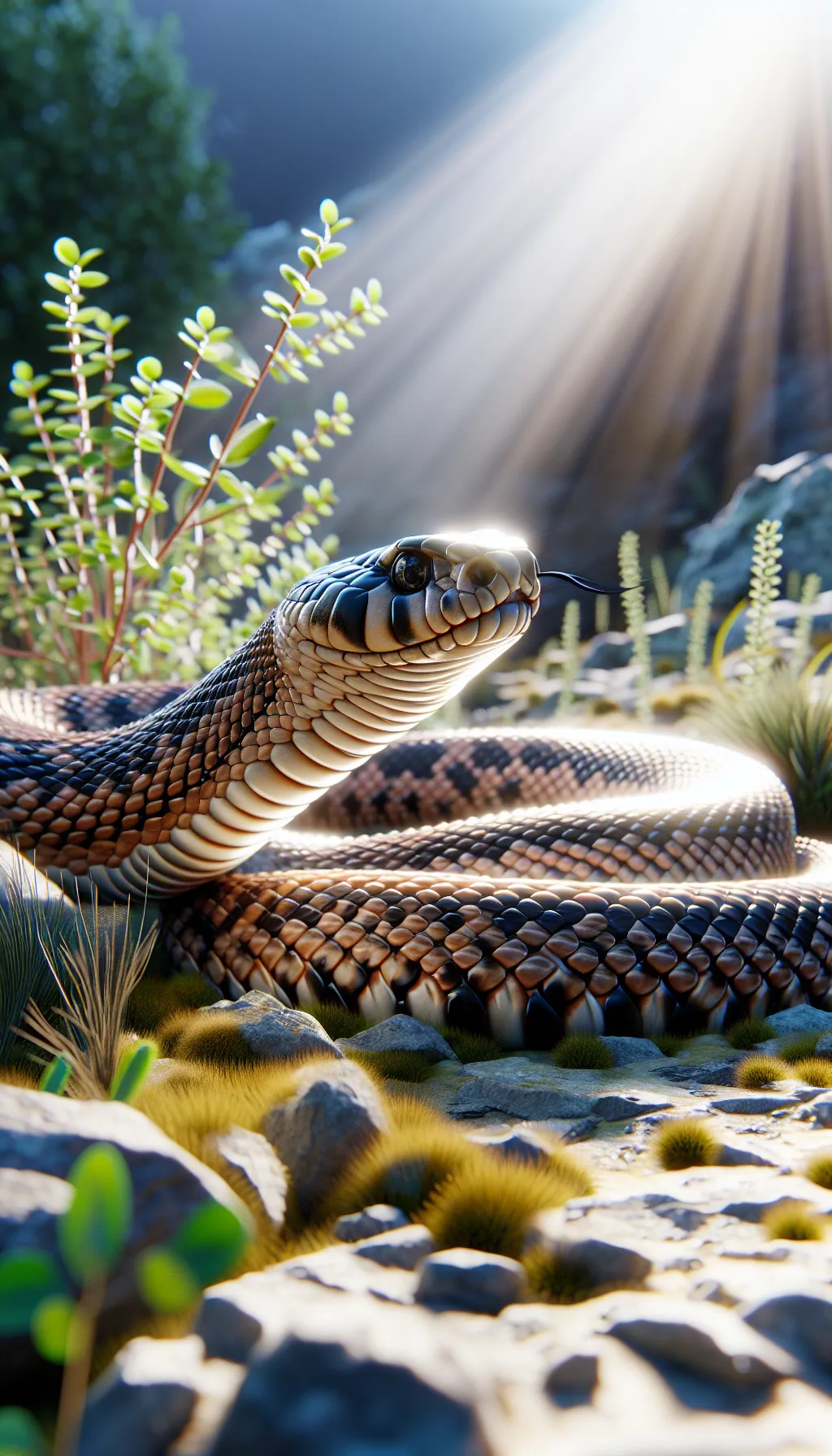
| Bull Snake | |
|---|---|
| Size | 4-6 feet (1.2-1.8 meters) |
| Weight | 2-6 pounds (0.9-2.7 kilograms) |
| Speed | 8mph (13km/h) |
| Key Strength | Constriction ability |
| Biggest Weakness | Lack of venom |
| Scientific Name | Pituophis catenifer |
| Family | Colubridae |
| Habitat | Grasslands, deserts, scrublands, and semi-arid areas |
| Geography | North America |
| Diet | Rodents, birds, frogs, lizards |
| Lifespan | 15 years - 20 years |

The Bull Snake
The Bull Snake, also known as the gopher snake, is a non-venomous reptile found throughout North America. They are medium to large-sized snakes, measuring between 3 to 6 feet in length, with some reaching up to 8 feet. Bull Snakes have a distinctive pattern on their back, consisting of dark brown or black blotches bordered with lighter colored scales. Their belly is pale yellow or cream-colored. These snakes are known for their bluffing behavior, hissing loudly and mimicking a rattlesnake by vibrating their tail when threatened.
![[object Object] Gif](https://tenor.com/view/bullsnake-rattlesnake-snake-strike-hissing-mimic-gif-17072855.gif)
Fun Fact: The Bull Snake has an amazing ability to imitate the sound of a rattlesnake by vibrating its tail against dry leaves or grass, fooling predators into thinking they are in the presence of a venomous snake.
| Bull Snake | |
|---|---|
| Size | 4-6 feet (1.2-1.8 meters) |
| Weight | 2-6 pounds (0.9-2.7 kilograms) |
| Speed | 8mph (13km/h) |
| Key Strength | Constriction ability |
| Biggest Weakness | Lack of venom |
| Scientific Name | Pituophis catenifer |
| Family | Colubridae |
| Habitat | Grasslands, deserts, scrublands, and semi-arid areas |
| Geography | North America |
| Diet | Rodents, birds, frogs, lizards |
| Lifespan | 15 years - 20 years |
Bull Snake Matchups
We use AI to simulate matchups between the Bull Snake and other animals. Our simulation considers size, strength, and natural predatory behaviors to determine the most likely outcome.
Bull Snake: Diet, Predators, Aggression, and Defensive Behaviors
What do Bull Snakes eat?
Bull Snakes are known to be opportunistic feeders, consuming a diverse diet of small mammals such as mice, rats, and rabbits. They are also known to eat birds, lizards, amphibians, and insects. Their diet varies based on prey availability in their habitat.
Do Bull Snakes have any predators?
While Bull Snakes are not at the top of the food chain, they do have predators such as birds of prey, larger snakes, and mammals like coyotes. Juvenile Bull Snakes are especially vulnerable to predation as they are smaller and less experienced in defending themselves.
Are Bull Snakes aggressive?
Bull Snakes are not inherently aggressive towards humans, but they will defend themselves if they feel threatened. They are known to mimic the behavior of Rattlesnakes by hissing loudly, flattening their heads, and vibrating their tails against the ground to scare off potential threats.
Do Bull Snakes fight?
Bull Snakes are not typically territorial, so they don't engage in fights with each other unless it is during the breeding season when males may compete for females. However, they are known to stand their ground and defend themselves if they feel threatened by a predator.
How do Bull Snakes defend themselves?
When threatened, Bull Snakes rely on their intimidating size (they can grow up to 6 feet in length), hissing, vibrating their tails, and even striking if necessary. They are also known to release a foul-smelling musk as a defensive mechanism to deter predators.
What is the biggest weakness of a Bull Snake in a fight?
Despite their size and defensive strategies, Bull Snakes still have vulnerabilities in a fight. Their lack of venom means they rely solely on physical strength and intimidation to defend themselves, making them more susceptible to injury from predators with more powerful weapons like venomous snakes or birds of prey.
Fun Fact: Bull Snakes are excellent climbers and can scale trees and bushes to search for prey or escape from potential threats.
Fun Fact: When threatened, Bull Snakes flatten their heads, necks, and bodies to create an intimidating appearance, giving them the nickname "puff adder." However, unlike true venomous snakes, they do not possess venom and rely on their bluffing techniques to deter predators.



